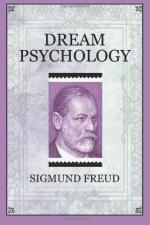"Flectere si nequeo superos, Acheronta movebo."
At any rate the interpretation of dreams is the via regia to a knowledge of the unconscious in the psychic life.
In following the analysis of the dream we have made some progress toward an understanding of the composition of this most marvelous and most mysterious of instruments; to be sure, we have not gone very far, but enough of a beginning has been made to allow us to advance from other so-called pathological formations further into the analysis of the unconscious. Disease—at least that which is justly termed functional—is not due to the destruction of this apparatus, and the establishment of new splittings in its interior; it is rather to be explained dynamically through the strengthening and weakening of the components in the play of forces by which so many activities are concealed during the normal function. We have been able to show in another place how the composition of the apparatus from the two systems permits a subtilization even of the normal activity which would be impossible for a single system.
[1] Cf. the significant observations by J. Bueuer in our Studies on Hysteria, 1895, and 2nd ed. 1909.
[2] Here, as in other places, there are gaps in the treatment of the subject, which I have left intentionally, because to fill them up would require on the one hand too great effort, and on the other hand an extensive reference to material that is foreign to the dream. Thus I have avoided stating whether I connect with the word “suppressed” another sense than with the word “repressed.” It has been made clear only that the latter emphasizes more than the former the relation to the unconscious. I have not entered into the cognate problem why the dream thoughts also experience distortion by the censor when they abandon the progressive continuation to consciousness and choose the path of regression. I have been above all anxious to awaken an interest in the problems to which the further analysis of the dreamwork leads and to indicate the other themes which




